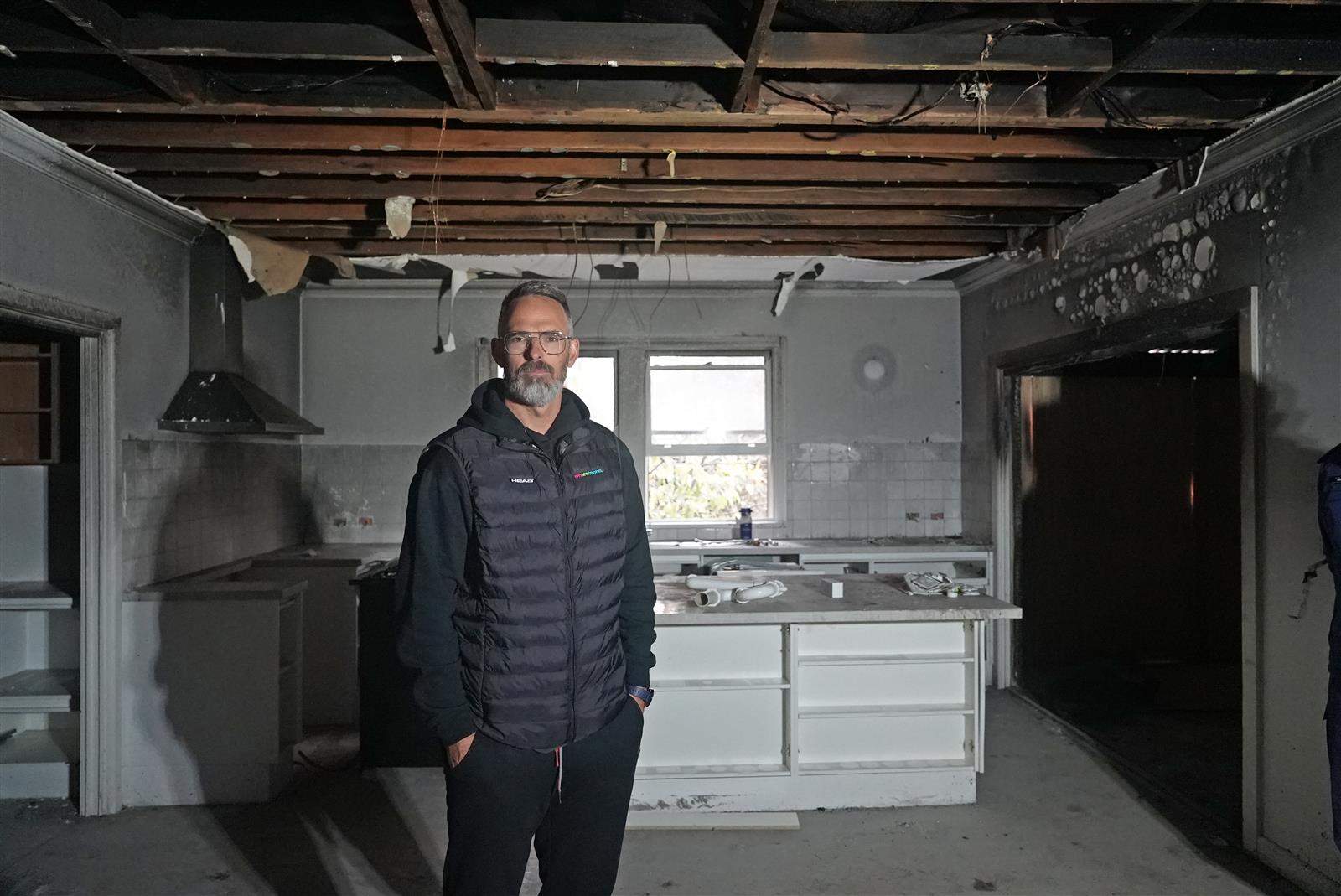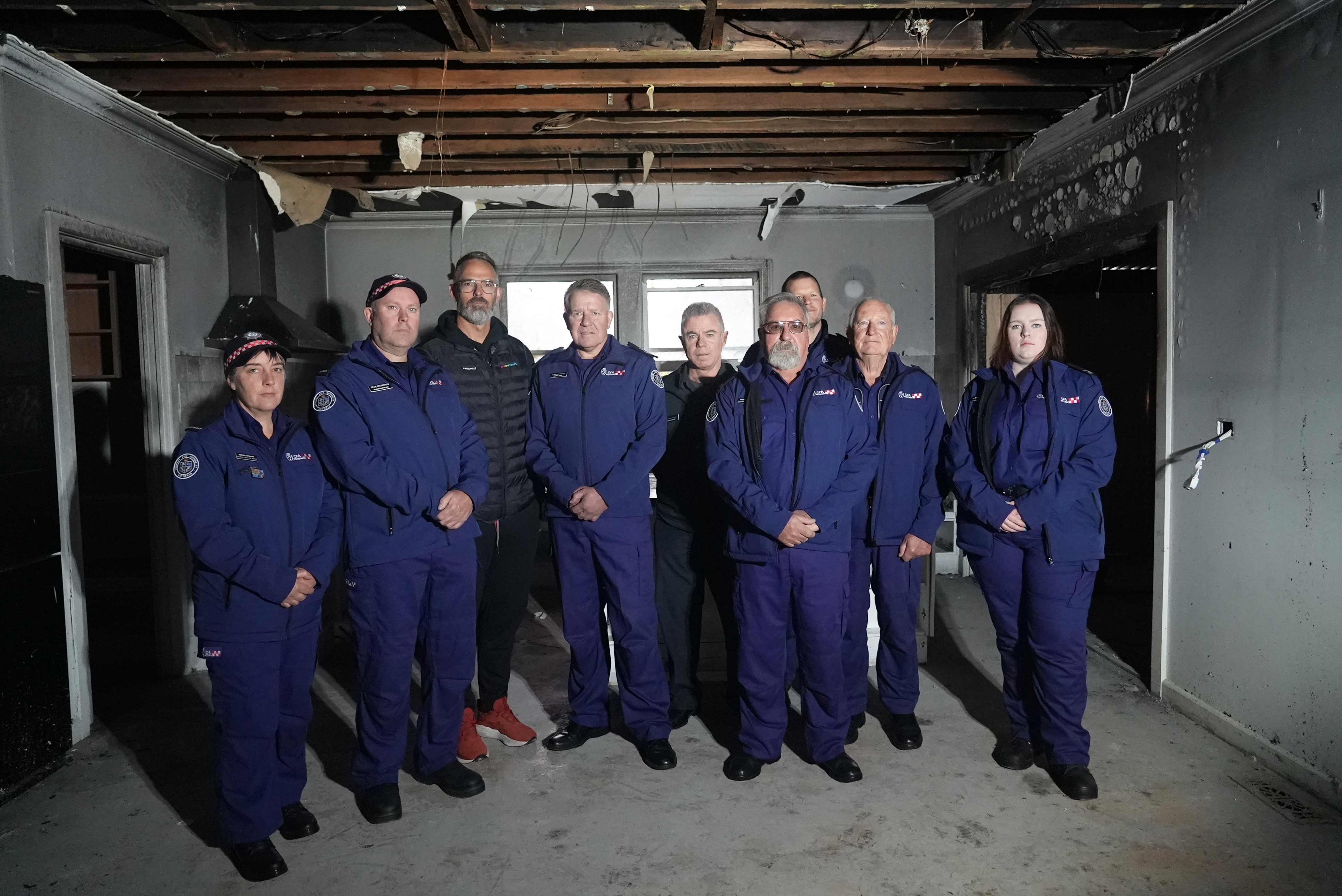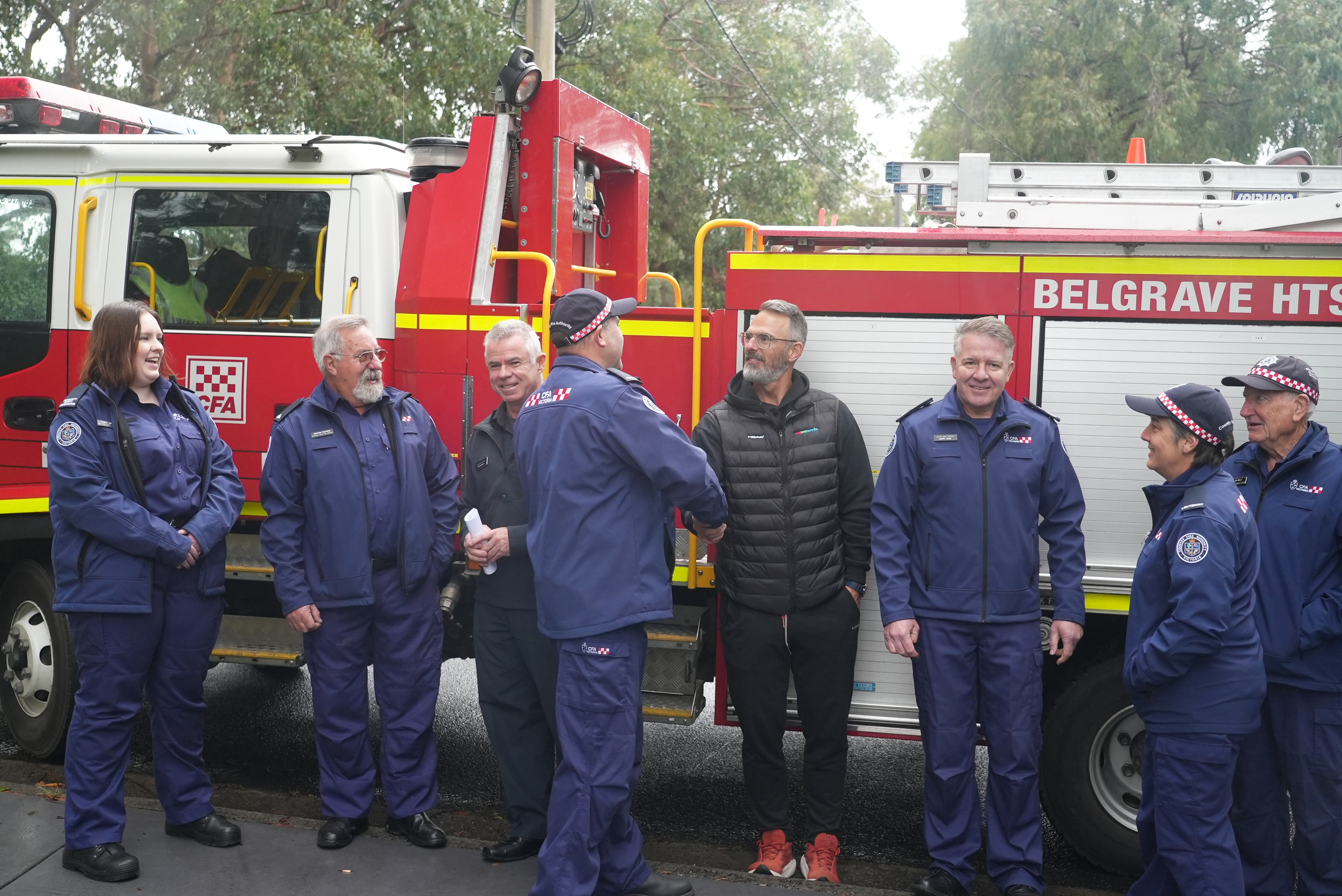 Property owner, Sean Wilkeson
Property owner, Sean Wilkeson
A quick-thinking Belgrave Heights father has his working smoke alarms and intuition to thank for helping his family to escape from their burning home last month.
Their lucky escape has prompted Victorian fire services to once again emphasise that smoke alarms are a bedroom essential and having smoke alarms installed in every bedroom, hallway and living area in your household might just save your life.
Data from CFA and Fire Rescue Victoria shows that more than 72 per cent of deadly fires start in bedrooms and living areas. It is often overlooked that most house fires start at times when you are asleep, and worryingly we know that only 17 per cent of people have smoke alarms in sleeping areas.
A smoke alarm costs as little as $20, with a wide range of other types on the market.
The family of four’s devastating experience serves as a timely reminder for the community to consider making a smoke alarm their next bedroom essential.
In early April, Sean Wilkeson, his wife and two children safely left their home in the middle of the night, after falling objects and working smoke alarms alerted them to a fire that entered their home from outside while they slept.
“At around 4am, I was restless in bed and could hear noises outside. At first, I thought someone was breaking into the house, as it was as if things were falling over,” he said.
“I got up to investigate and I went down the hallway towards the living and dining wing of the house. I could see smoke entering in and that was when our smoke alarms went off.
“I could see the kitchen wall on fire, and it had gone up into the roof. It came through from the deck where our outdoor fridge sits.
“As soon as you see it, a million things go through your mind. I thought, ‘Can I put it out? No, I can’t, I’ve got to get everybody out of the house.’
“I ran back down the hallway to all the bedrooms and told my wife to ring Triple Zero immediately. We got everyone out onto the road at a safe distance outside the house.
“Our local CFA captain said if we delayed that call by just minutes, we would have lost everything.”
Sean’s experience is a reminder to community members to check and test their smoke alarms regularly.
“Although I was woken up by the sounds outside, I felt reassured that the smoke alarms operated properly and were able to inform the rest of my family,” he said.
“I was lucky, but for those in a deep sleep at any hour of the day, it is the smoke alarms we rely on.
“Having lived this experience and watching our house become uninhabitable, I can’t stress enough how worthwhile checking and testing your smoke alarms can be. I had just changed one of our batteries and I’m so thankful I did.
“When we rebuild, we will no doubt be installing interconnected smoke alarms in every bedroom, living room and hallway.”
CFA Acting Chief Officer Garry Cook said this is just one of many examples we have seen over recent weeks that reiterates the need for Victorians to install smoke alarms in sleeping areas.
“Smoke alarms are a low-cost essential item that can keep you safe, and that no bedroom is complete without,” he said.
“We need Victorians to understand that fire risk is greatest when you are asleep. We lose our sense of smell and often smoke can put us in a deeper sleep.
“Research shows that most children under 10 will not wake up to a beeping smoke alarm, so it’s important that you can hear them on their behalf to wake up in time to safely escape.”
Fire Rescue Victoria Assistant Chief Fire Officer – Community Resilience Darren McQuade said to be vigilant when placing smoke alarms in the home.
“Some people may think that a smoke alarm outside their bedroom will be enough to warn them in case a fire starts. However, the latest research from Fire and Rescue NSW showed if a fire starts in a bedroom and the door is closed, the smoke alarm outside the bedroom will not sound,” he said.
“That’s why we recommend that the smoke alarms in your home are interconnected, so when one goes off, the rest do, and you have a higher chance of responding regardless of where you are at the time.
“Being caught at the final moment of a house fire is a scenario we don’t want any family to face and it can be easily avoided by simply checking your smoke alarm placements, and looking into the different types of smoke alarms available to see which type is right for your home.”
A recent fire services survey of 350 respondents revealed that:
- Only 17 per cent of people had smoke alarms in their bedrooms.
- Nearly half (47 per cent) of people do not have a smoke alarm in any living room.
CFA and FRV data reveals:
- Over the past 10 years, CFA has responded to more than 14,000 residential fires, where 490 have resulted in a casualty (fatality or serious injury).
- Last year, there were 723 residential house fires incidents and 110 started in bedrooms or lounge rooms.
- Residential fires that result in fatalities and/or serious injuries start in lounge and sleeping areas.
- Most are caused by mechanical failure of heating systems, appliances and equipment.
Smoke alarm tips:
- Only working smoke alarms save lives.
- Smoke alarms must be located between each bedroom area and the rest of the house.
- Smoke alarms should be installed in every bedroom and living area.
- Smoke alarms should be installed on the ceiling at least 30cm from the wall, or installed on the wall at least 30cm from the ceiling to avoid dead air space.
- Smoke alarms should be interconnected, so when any alarm activates, all smoke alarms will sound.
- Fire services recommend the use of smoke alarms powered by a 10-year long life battery.
- Smoke alarms should be tested monthly by pressing the test button on the alarm and waiting for the test alarm to sound.
- Smoke alarms should be cleaned with a vacuum cleaner or dusted at least once a year to remove particles that will affect smoke alarm performance.
- Replaceable batteries in a smoke alarm need to be changed yearly.
- Smoke alarms, including those attached to mains power, should be replaced every 10 years.
For more information visit the CFA website and FRV website.
 Belgrave Heights CFA firefighters, property owner Sean Wilkeson, CFA Acting Chief Officer Garry Cook and FRV Assistant Chief Fire Officer Darren McQuade
Belgrave Heights CFA firefighters, property owner Sean Wilkeson, CFA Acting Chief Officer Garry Cook and FRV Assistant Chief Fire Officer Darren McQuade-
 CFA Belgrave Heights Captain Sean Grondman shaking property owner Sean Wilkeson's hand alongside firefighters and CFA Acting Chief Officer Garry Cook
CFA Belgrave Heights Captain Sean Grondman shaking property owner Sean Wilkeson's hand alongside firefighters and CFA Acting Chief Officer Garry Cook
-
-
-